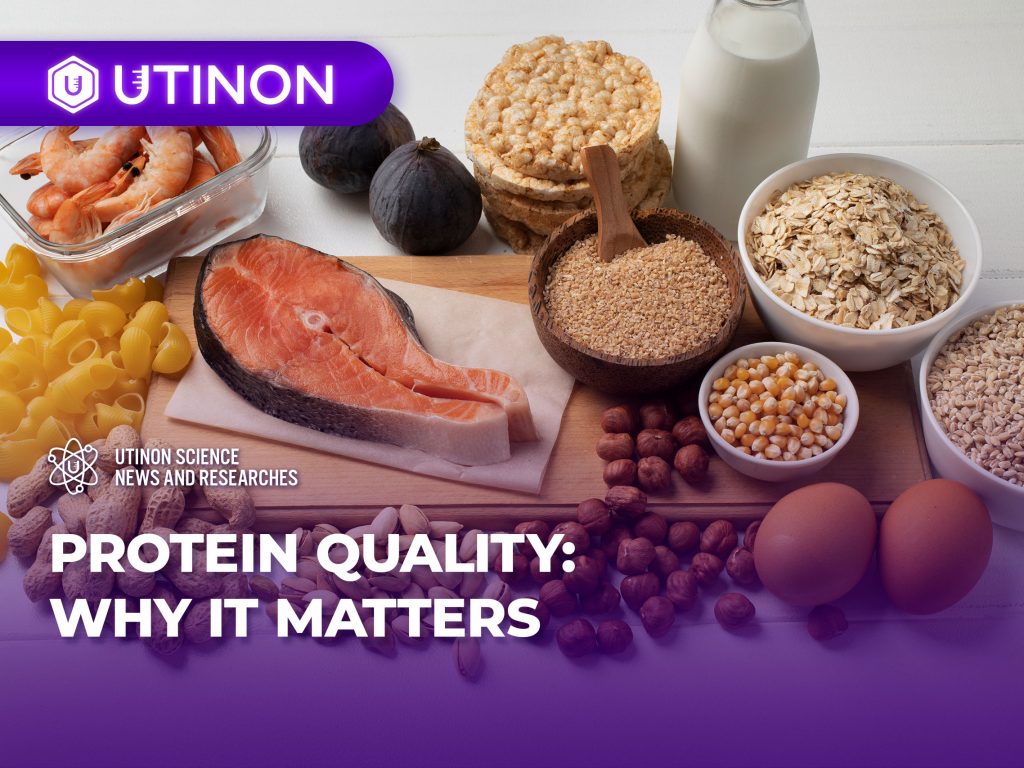When tracking your nutrition with apps like MyFitnessPal, it’s easy to assume that all protein grams are equal. After all, your sandwich might log protein from the wheat bread, onions, tomatoes, chicken, and cheese—so it looks like you’re hitting your daily protein target. But here’s the real question: how much of that protein is actually helping you build or maintain muscle?
Welcome to a deep dive into protein quality—what it is, why it matters, and how to make smarter choices that maximize muscle growth and retention.
🧬 What Is Protein Quality?
Not all proteins are created equal. To evaluate quality, scientists often use the PDCAAS (Protein Digestibility-Corrected Amino Acid Score). This system looks at two critical factors:
- Amino Acid Profile
Your body breaks down dietary protein into amino acids, which are the building blocks for muscle and tissue repair. If a protein source lacks enough of the essential amino acids your body needs—especially in the right proportions—then it’s a poor tool for muscle-building, no matter how many grams you eat. - Digestibility and Absorption
Some proteins are simply not absorbed well. Even if they have the right amino acids, poor digestion can mean that your body can’t actually use them efficiently. A protein source that’s poorly absorbed essentially “goes to waste” and contributes less to your muscle-building goals.
📊 PDCAAS Scores — From Worst to Best
To give you a sense of how different foods rank:
| Food | PDCAAS Score (%) | Notes |
| Gelatin/Collagen | 8% | Extremely low quality |
| Wheat Gluten | 25% | Incomplete and hard to digest |
| Rice | 47% | Low in lysine |
| Corn | 54% | Low amino acid diversity |
| Oats | 57% | Decent but incomplete |
| Lentils | 58% | Lacks methionine |
| Beans | 60% | Good support role |
| Chickpeas | 65% | Still insufficient alone |
| Peanut Butter | 70% | Mostly fat, low in leucine |
| Soy Isolate | 90% | High-quality plant protein |
| Quinoa | 92% | Rare complete grain |
| Tofu | 93% | Excellent vegan source |
| Fish (Salmon) | 95% | Complete, digestible |
| Chicken Breast | 95% | Gold standard |
| Beef | 96% | Great for growth |
| Pork | 97% | Very high-quality |
| Eggs, Casein | 100% | Reference standard |
| Whey Protein Isolate | 104% | Most anabolic |
Key Takeaway: A PDCAAS score of 90% or higher is considered high-quality protein.
🎯 How Much Protein Do You Really Need?
For maximizing muscle growth and retaining lean mass, the sweet spot is around:
- 1 gram of protein per pound of body weight per day
So if you weigh 68 kg, aim for roughly 150 grams of protein daily. This may be slightly more than some literature suggests, but recent studies—especially on trained individuals and those in a caloric deficit—support this higher intake.
Fine-tuning by training level:
- Light Training or Maintenance: ~1.8 g/kg may be enough
- Heavy Training or Cutting: Up to 2.7–2.9 g/kg is helpful
Protein Safety:
- Overeating protein = harmless (extra is burned as energy)
- Undereating protein = muscle loss risk — no bueno
✅ The 75% Rule for Protein Quality
To build and maintain muscle efficiently:
- At least 75% of your daily protein should come from high-quality sources (PDCAAS ≥ 90%).
- The remaining 25% can be from lower-quality sources (e.g., bread, legumes, veggies).
Example:
- Chicken (35g protein)
- Whole-wheat bread + veggies (5g protein)
- Total: 40g per meal — 87.5% from high-quality protein ✔️
🥗 Practical Strategy: Build Meals Around a Protein Core
To simplify things:
Start every meal with a core of high-quality protein.
Here are easy go-to sources:
- Animal-based: Chicken, fish, beef, pork, eggs, dairy, whey/casein protein
- Plant-based: Soy products (tofu, tempeh, soy isolate), quinoa, vegan protein blends
Avoid relying too heavily on foods like:
- Peanut butter (mostly fat, not much digestible protein)
- Bread and grains (helpful fillers but not quality protein sources alone)
Even vegan eaters can thrive if they strategically combine plant sources (like rice + beans) or include high-quality plant proteins like soy.
🧠 Bonus Tips
- Per-meal balance matters. Try to get that 75:25 ratio at every meal, not just across the day.
- Tracking is not perfect. Apps count all protein equally—but your body doesn’t.
- Snacks matter too. Adding a glass of milk or a protein shake to a low-protein snack can turn it into a muscle-supporting win.
Final Thoughts
You don’t need to obsess over every gram, but starting your meals with a high-quality protein source will cover 90% of the challenge. Whether your goal is fat loss, muscle gain, or maintenance, smart protein choices will make the journey smoother, faster, and more effective.
